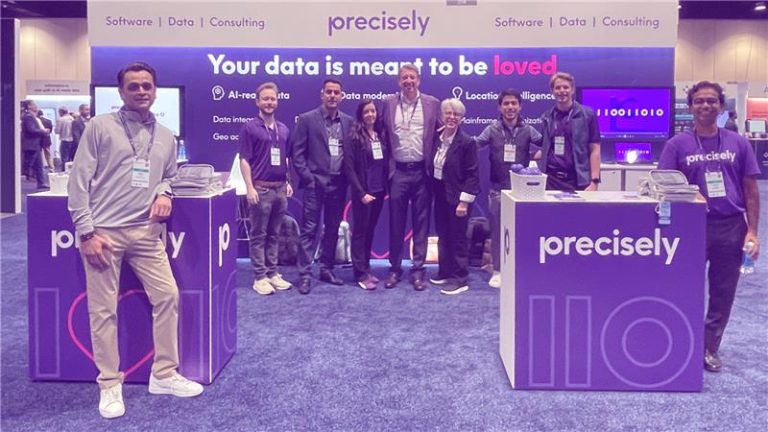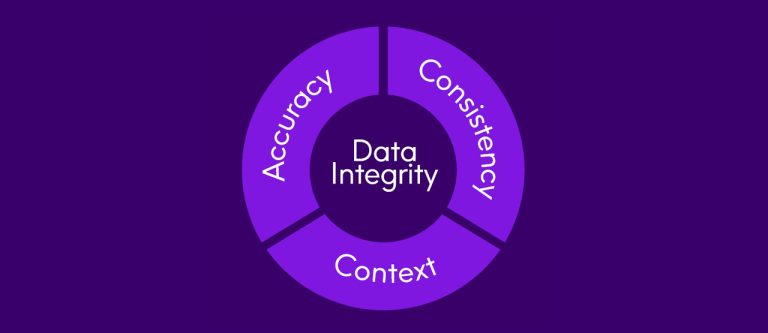
Modern Data Architecture: Data Mesh and Data Fabric 101

Key Takeaways:
- Data mesh is a decentralized approach to data management, designed to shift creation and ownership of data products to domain-specific teams.
- Data fabric is a unified approach to data management, creating a consistent way to manage, access, and share data across distributed environments.
- Both approaches empower your organization to be more agile, data-driven, and responsive so you can make informed decisions in real time.
If your organization strives to manage its data efficiently while ensuring agility, compliance, and insightful decision-making, the modern data era presents a host of opportunities – and challenges. With data volumes skyrocketing, and complexities increasing in variety and platforms, traditional centralized data management systems often struggle to keep up.
As data management grows increasingly complex, you need modern solutions that allow you to integrate and access your data seamlessly.
Data mesh and data fabric are two modern data architectures that serve to enable better data flow, faster decision-making, and more agile operations.
Both architectures share the goal of making data more actionable and accessible for users within an organization. Each architecture comes with a unique set of benefits and challenges and ultimately seeks to foster a data-driven culture where decisions are informed by real-time, high-quality data.
Which approach is best for your business use case? Let’s examine the structures, benefits, challenges, and potential use cases for each, and explore how to implement them both successfully.

Two Rising Modern Data Architectures: Data Mesh and Data Fabric
Data Mesh
A data mesh is a modern architecture that decentralizes data management, designed to shift creation and ownership of data products to domain-specific teams. Instead of relying on a central data management team, this architecture empowers your subject matter experts and domain owners to curate, maintain, and share data products that impact their domain. While data products may have different definitions in different organizations, in general it is seen as data entity that contains data and metadata that has been curated for a specific business purpose.
Key Characteristics of Data Mesh
- Domain empowerment: Domain owners and subject matter experts must be empowered and held accountable for creation and management of data products.
- Self-service access to data sources: Domain experts have the access to critical domain data to create, maintain, and share data products, reducing bottlenecks and improving responsiveness.
- Decentralized governance: Domain teams manage their data and are responsible for compliance, privacy, and security, with a governance model that ensures consistency across the organization yet adapts to domain specific needs.
- Data product discovery: Data consumers can quickly determine if a data product exists that fits their purpose and be more efficient when requesting, creating or expanding data products.
Data Mesh Benefits
Data mesh’s decentralized nature allows for a host of valuable benefits, including:
- faster data product delivery: since domain experts understand their data and can respond to requests in real time. This accelerates innovation and improves alignment between data and business objectives.
- stronger data policy monitoring: enabling you to address privacy, security, and regulatory concerns while maintaining autonomy at the domain level.
- improved agility and scalability: with increased visibility into existing data products within and across domains, data consumers can move quickly and leverage existing intelligence for informed decisions and insights.
Data Mesh Challenges
Data mesh comes with a unique set of challenges. Organizations need governance maturity to ensure that domain teams can manage their data effectively. Additionally, implementing a data mesh may require cultural changes, as teams need to be accountable for their data management practices with responsibilities domain owners may not be able or willing to take on.
Data Fabric
While data mesh focuses on decentralization, data fabric takes a more unified approach, creating a unified way to access, manage, and share data across distributed environments, whether on-premises or in the cloud. A data fabric weaves together different data management tools, metadata, and automation to create a seamless architecture.
Key Characteristics of Data Fabric
- Automated data access: Data fabric combines tools and technologies that automate access to data that impacts the scope of the data fabric including traditional as well as more modern data sources.
- Management of metadata: Metadata is automatically, captured, catalogued and activated to feed analysis of data trends and insights.
- AI and machine learning (ML) analysis: Analyze metadata to offer recommendations for data management based on how data is actually being used, including insights for improved data operations, quality, or even suggestions for data products.
- Centralized governance: While the data itself may be distributed, data fabric centralizes governance to ensure that policies, security, and compliance are maintained across the organization.
- Self-service access: Discover and access trusted data and data products on-demand to power data & analytics and operations.
Data Fabric Benefits
With a unified view of your metadata across environments, you can boost agility and innovation. Key benefits of data fabric include:
- advanced analytics and faster decisions: with easy access to high-quality, real-time data – wherever it’s stored – you can leverage advanced analytics and accelerate decision-making based on the usage of your data.
- automated data management recommendations and insights: optimize data management and processes with AI/ML-driven insights into your data usage.
- improved compliance and security: data fabric is supported by centralized data governance – ensuring your data is managed in compliance with guidelines and regulations, wherever it’s stored and however it’s used.
Data Fabric Challenges
Development complexity is a key challenge for data fabric architectures. That’s because there’s no singular data fabric solution – rather, it’s an architecture composed of multiple components that work together – many of which are still in the early stages of development. This complexity requires a mature data engineering team to design, implement, and manage it effectively.
A lack of metadata maturity is another challenge that can hinder the success of your data fabric architecture. You need robust metadata management practices to activate and maximize your data fabric’s effectiveness.
Read the eBook
Preparing for Modern Data Management: Practical Tips for Data Mesh and Data Fabric Success
To learn more about the shift towards modern data architectures and data-driven culture, read our eBook and see how organizations are unlocking the potential of their data, and getting inspired.
Best Practices for Implementing Data Mesh and Data Fabric
When considering the implementation of either data mesh or data fabric, it’s important to keep best practices in mind. Here are a few to consider:
- Prioritize data governance: Establish strong governance frameworks that balance autonomy and control. In data mesh, this means empowering domain teams with responsibility while maintaining overall governance consistency. In data fabric, it involves centralizing governance to ensure compliance and privacy.
- Invest in metadata: Both modern data architectures rely heavily on metadata. Invest in AI-driven metadata management to ensure data is appropriately tagged, categorized, and available for use.
- Foster a data-centric culture: Success in either architecture requires a cultural shift towards valuing and utilizing data. Implement self-service tools that enable users to access, understand, and leverage data independently.
Building the Future of Data Management
Data management will continue to evolve, and adopting modern architectures like data mesh and data fabric will help you unlock the potential of your data through it all.
Both modern data architectures offer their own advantages and challenges, but they ultimately converge on the same goal: empowering your organization to be agile, data-driven, and able to respond to market changes and make informed decisions in real time. Within an organization, they may even complement each other with data fabric laying the technical foundation and data mesh bringing the organizational structure to execute.
By focusing on enhancing metadata management, governance, and cultural readiness, you can lay the foundation for data-driven innovation and growth, ensuring you maintain a competitive edge in our increasingly data-centric world.
To learn more about the shift towards modern data architectures and data-driven culture, read our eBook, Preparing for Modern Data Management: Practical Tips for Data Mesh and Data Fabric Success. You’ll see how organizations are unlocking the potential of their data, and getting inspired.


